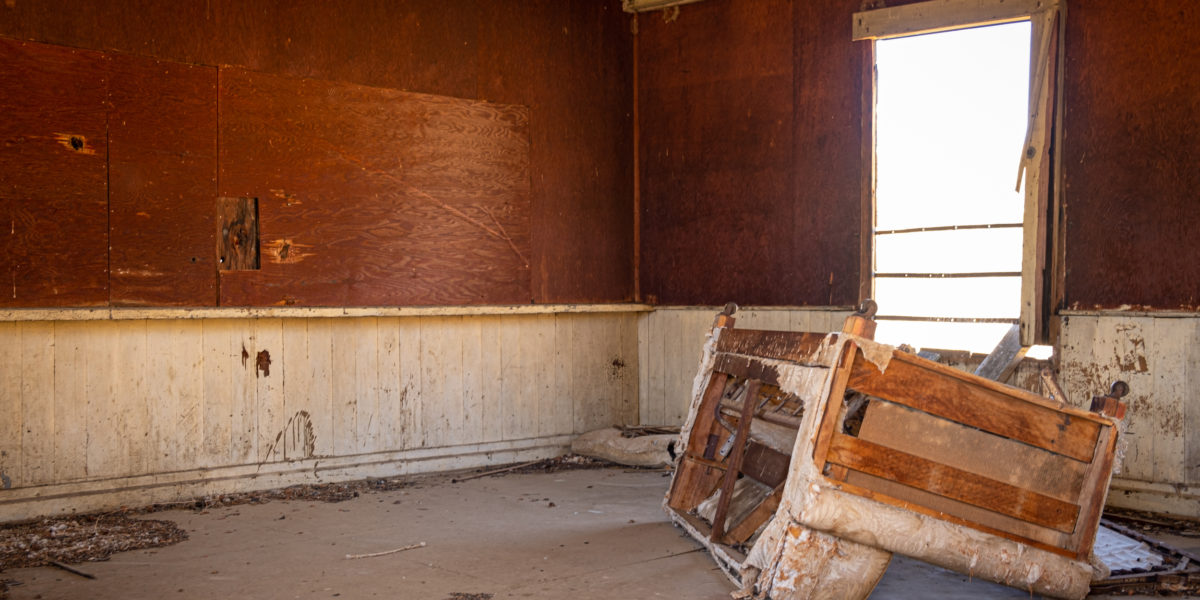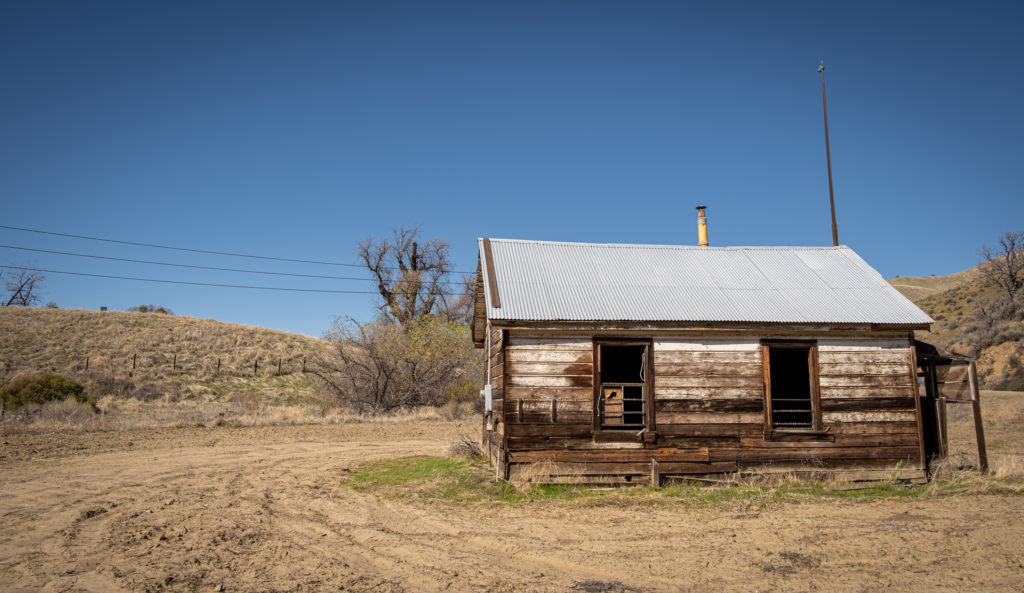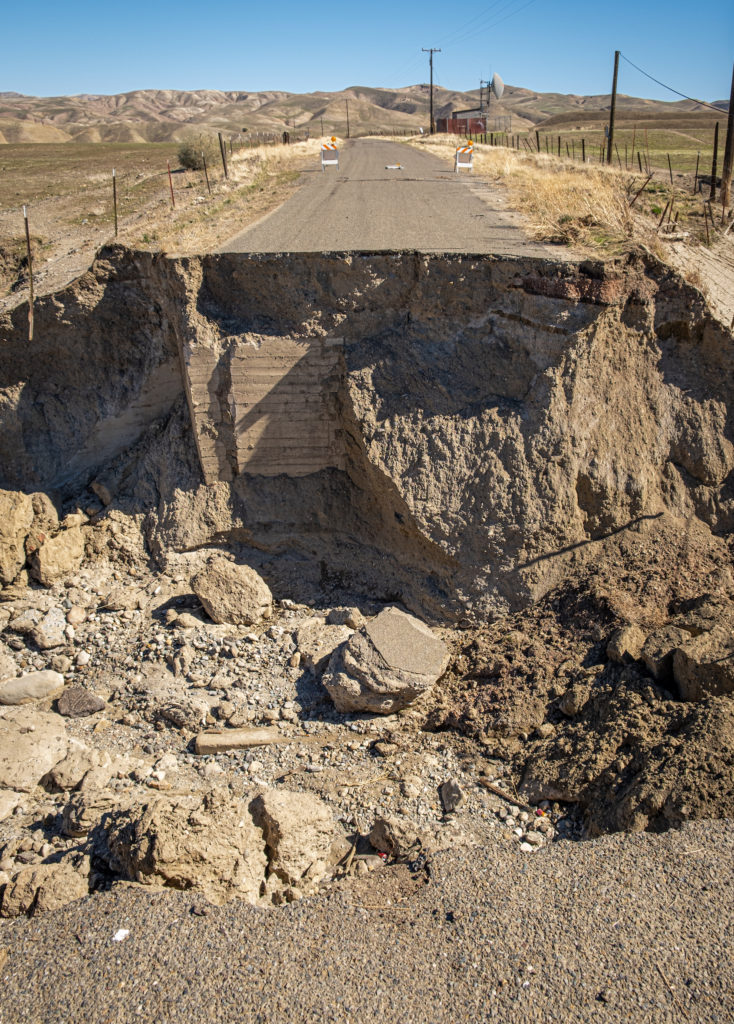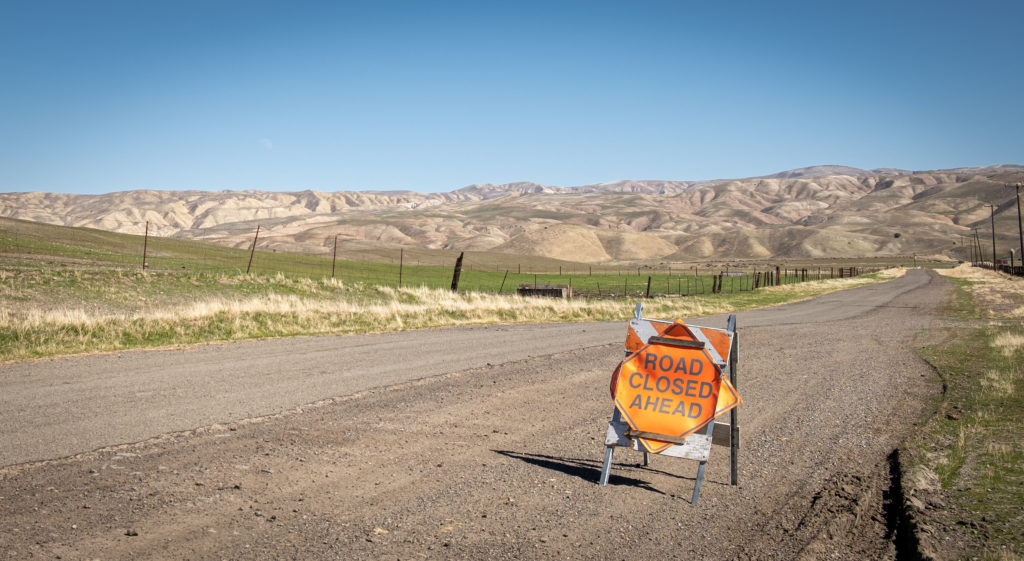
One of California’s Lost Ghost Towns Is Lost for Good Reason
New Idria is, at its core, an unsettling cesspool of toxicity, having produced approximately 38 million pounds of mercury since its founding.

Hannah McKelson
Editor’s Note: This is Part 1 of a two-part series documenting a visit to the California ghost town of New Idria. Read Part 2 here.
New Idria is, at its core, an unsettling cesspool of toxicity, a trait that hasn’t wavered since it was claimed in 1854 and initiated production of what would amount to 38 million pounds of mercury. Shut down in 1972 when the New Idria Quicksilver Mining Company closed, it would take nearly four decades for the site’s contamination to elicit a “superfund” designation by the Environmental Protection Agency.
The area contains three forms of mercury, including the most hazardous: monomethyl mercury, a neurotoxin. Water discharges the heavy metal through the local San Carlos and Panoche creeks, couriering toxicities up to 20 miles downstream. Asbestos levels remain high, and the local water runs rust-red. Any personal aversion to the poison lingering in the dirt and air is compounded by the town’s intrinsic eeriness as, well, a ghost town.
A friend who has visited New Idria dozens of times since his childhood described the site as possessing an almost atmospheric disquietude; dread heightened by isolation and made real by something else entirely, something intangible. He and his father wouldn’t even visit without a handgun and enough supplies to last a week.
For the local college kids, a night at New Idria was the ultimate dare—and one rarely taken. So, if you asked what possessed me to leave the Bay Area at 9 a.m. on a Saturday morning, armed only with a camera, water, and the intention of visiting a site that’s a far cry from Bodie or Calico, I won’t have a logical answer.
But that was my destination, driving for an hour through Silicon Valley until the road diverged and cities and suburbs gave way to sprawling farmland—an alarming expanse in a place where real estate costs a kidney.

Another hour, and then the whispers of high desert: barren mountains strewn with pines and the occasional oak tree or vineyard. Tres Pinos marked the last town before crossing into the middle of nowhere: buildings reminiscent of the Old West, population 683.
A one-lane road siphoned me deeper through the canyon until I pulled over at the first sign of a long-forgotten life: a single abandoned building marked with a faded “No Trespassing Sign” (good thing I can’t read). A closer look at the structure revealed walls peppered with bullet holes. Inside was a single overturned couch and nothing else.
By then I’d lost any trace of a cell signal. The roads were riddled with potholes and rough pavement that jolted my AWD car every few feet, a glorious hour-long stretch. Vegetation became scarce, and aside from the mountains, the most prominent features were the ruins of old barns.
I was closing in on New Idria—20 miles to go, 15, then 8—when I hit it. An impassable chasm; the fabled “road closure” a sign many miles prior had warned of—and one I had mistakenly opted against giving credence to.
I was stuck. There was no driving around it. My offline Google Maps refused to drum up an alternate route, so I had no choice. After magpie-ing my way through the asphalt littered with bullet casings and selecting as many unique ones as I could find (I stopped at 4), I got in the car and made my way out of the flatlands.

On my way I spotted a sun-bleached bodega on the roadside that I hadn’t noticed before. A couple of men were standing outside, accompanied by a sugar-sweet gray pit bull with a tail that broke into an ecstatic wag as I approached.
After a quick chat, the men confirmed my suspicions: the only other way to New Idria was to go all the way to the I-5, head toward a town called Coalinga, then through Jade Mill, which required a permit to even get through the gate. When I asked how long this detour would take, they laughed. Two more hours, minimum, just to get to the starting point, then another hour of highly technical offroading to get to the site. It would be dark by the time I arrived—if I arrived.
I drove home discouraged, sans music, but not defeated. I had an infiltration to plot. How the hell was I going to get to New Idria?
A night-long search for an efficient detour around the washout I’d encountered yielded only a singular mention of its existence—no shit—and nothing of its location. Because I didn’t have cell service for the entire stretch off of New Idria Road, I had to rely on general mileage estimation and some rudimentary landmark recall. In this case, it was a solitary satellite dish, cross-referenced in my photos with a smudge on Google Earth.

I painstakingly set pins on the road, counting my way to the eight-mile offsite washout where I’d gotten stuck. By my approximation, it was 36°28’26.7″N 120°44’42.0″W. The same friend who frequently visited the town used this estimation to reference roads so minimally trafficked they wouldn’t even appear on Google Maps.
